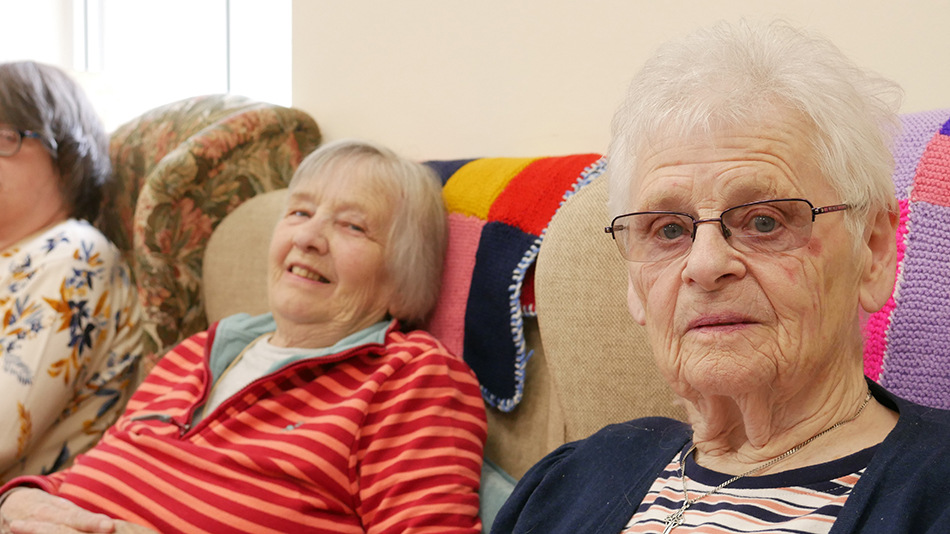This winter, thousands will struggle to afford their survival. Christian S. Phelps looks inside the entanglement of welfare payments causing serious problems.
Rebecca lives by the sea now. In Caernarfon, North Wales, she has access to public transportation and social groups—handy for an old age pensioner. She also enjoys milder weather.
“I lived in the mountains, near Llanberis,” she said. It’s so close you can see it from her new hometown. She lived up there for most of her life, and like nearly everyone in the area, she thinks fondly of these rural, mountainous villages.
Nevertheless, she said, “I wouldn’t go back there.”
I wouldn’t go back there.
Rebecca on living in the mountains
Many people struggle to stay afloat in the bitter sea of wintertime, and demand for cold weather benefits is growing.
But many aren’t even aware of the help they should be getting, and according to Hywel Williams, MP for the Arfon constituency, temperature-based support is difficult to track.
“It’s a peculiar thing because it is sort of discretionary on the basis of temperature,” Mr Williams said. “What you don’t know, you don’t know.”
Those receiving combinations of pensioners’ allowances, Universal Credit, disability payments, or other benefits are usually eligible for winter-specific payments, when the weather is cold and bills are heftier. Still, measuring people’s needs against changing weather conditions can be a tricky algorithm.
Each year, the government offers consistent fuel assistance to people whose incomes require help heating their homes. Many people are also eligible for a more obscure payment: Cold Weather Credit, a £25 weekly allowance given when the temperature at people’s homes is forecast to be below zero degrees for seven days.
But not everyone’s home is the same.
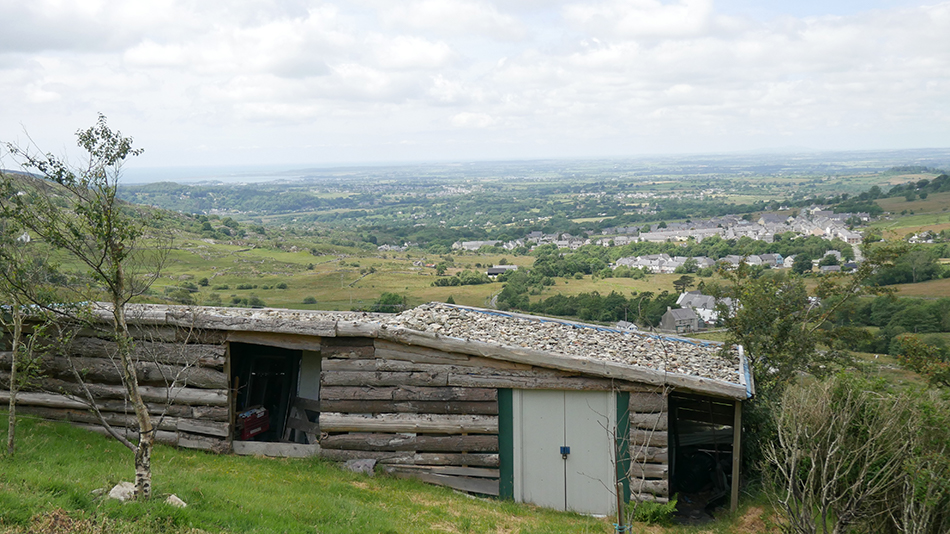
“The areas which suffer from cold weather most severely in my constituency could be lumped in with the next door area,” Mr Williams said—and “next door” can be much, much different.
Caernarfon sits on the Menai Strait, barely separating the mainland Welsh town from the Isle of Anglesey. It has become a tourist destination, rich in royal history, proximity to other towns, and breathtaking landscapes.
It is also less than 10 miles from Llanberis, one of many settlements in the middle of Snowdonia National Park, home to Wales’s highest peak. Such a dramatic change in topography, while beautiful to the eyes, can come with huge differences in temperature: though the coast is moderate, the nearby mountains cultivate snow and ice.
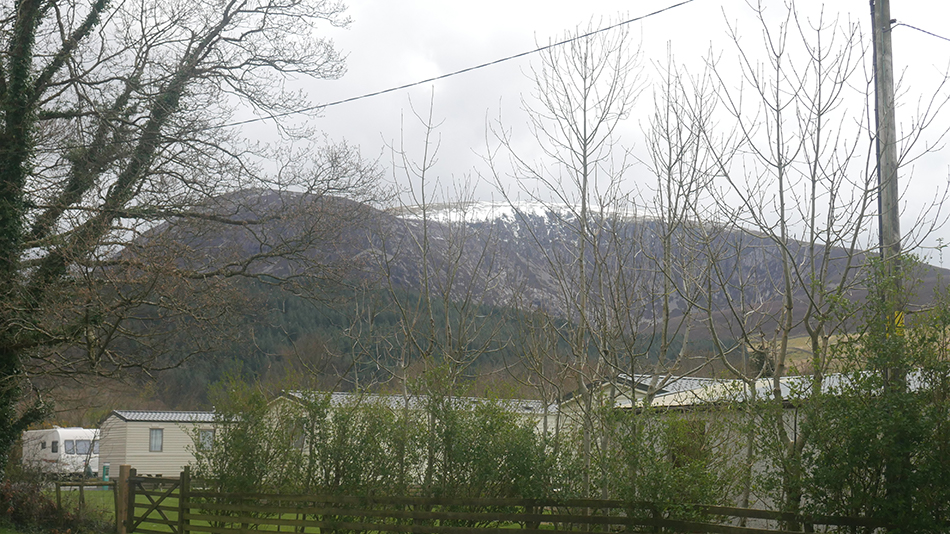
“We have settlements very high up in those areas, mainly built in the 19th century when there was a great deal of mineral export,” Mr Williams said, “so there was lots of fairly low standard houses put up very quickly at the same time, without too much regard for weather conditions.”
In these susceptible homes, people eligible for week-by-week Cold Weather Credit payments are likely to experience sub-zero temperatures more often than their sea-level neighbours.
One winter nearly 20 years ago, when Rebecca still lived in the mountains, snow kept her inside for 10 days. She was fortunate to have relatives deliver groceries to her house.
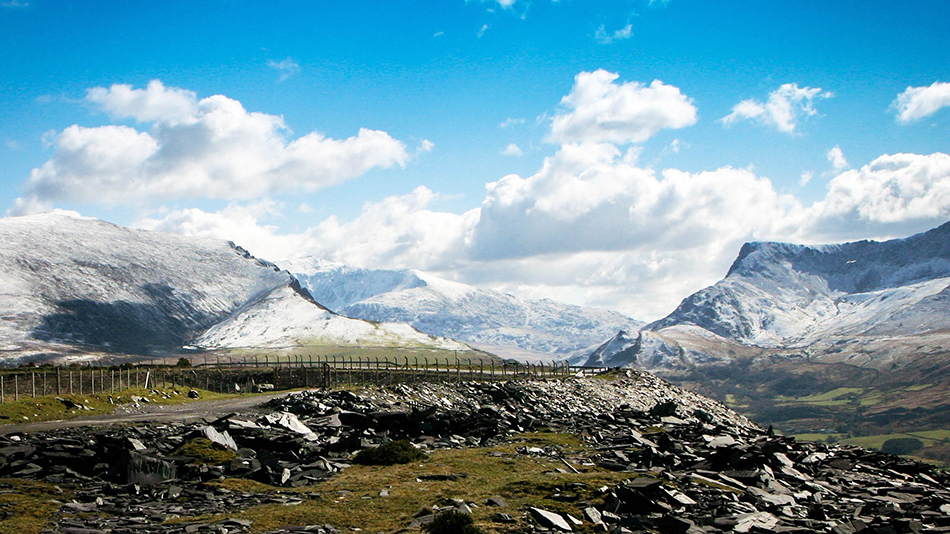
So how does the Department for Work and Pensions measure everyone’s temperature?
“They use weather stations,” Mr Williams said. “But they only use about a sixth of them.”
He is roughly correct, according to Met Office and UK Government information: of 540 temperature-reading weather stations in the UK, the government uses 94 to calculate Cold Weather Credit eligibility.
As a result, the government lumps mountainous homes in with coastal Anglesey readings.
The Department for Work and Pensions directed questions on their measurement system first to the Pension Service and then to the Met Office.
“It wouldn’t be us that are involved in any kind of payment decision,” said Bonnie Diamond, a Met Office press representative. “We provide weather data and climate information.”
Still, the logistical issues make sense. “The temperature at the weather station on Anglesey, that will differ if it’s taken somewhere else, so that’s all we can say, really,” Ms Diamond said.
In the end, the DWP provided a statement on Cold Weather Credit, emphasising that it is automatically triggered and that “tackling poverty will always be a priority for this government.”
It is the difference between having a cold house and a warm house.
Hywel Williams MP
DWP Press Officer Chloe Vinden said, “The scheme links postcodes to the weather stations that provide the most stable and accurate readings.” She added that the system is reviewed every year.
When pressed further on the use of only 94 weather stations and the specific concerns in Mr Williams’s district, DWP press representatives referred back to their website outlining the methodology behind Cold Weather Credit. No one at the DWP disputed the idea that only a sixth of all weather stations were used.
According to Met Office data from recent years, elevated areas like that of Rebecca’s old home are often two to three degrees colder than the Isle of Anglesey.
The BBC reported in 2018 that “thousands” of people, largely in North Wales, may have missed out on Cold Weather Credit payments despite their eligibility. And in a time when poverty rates are on the rise, these payments are part of a lifeline for many people struggling to get through the winter months.
Arfon Foodbank and Shelter Cymru representatives, each of whom operate charities to help people in the region deal with poverty, said demand rises after Christmas, when people have spent money on gifts and cold weather is really setting in.
“What you have is a strain on social services, which are already very stretched here,” Mr Williams said of these patterns, “because if you look at the demography of the area, we have more older people, more people with a disability and long-term illness.”
Knowing what they should get is a complicated task for some payment recipients, as the eligibility forms for other benefits are typically used to calculate eligibility for Cold Weather Credit.
Those on various other benefit schemes are supposed to receive a Cold Weather Credit payment automatically when the temperature dips low enough. In addition to the faulty measurement system Mr Williams has outlined, though, people’s difficulties with Universal Credit, Jobseekers’ Allowance, disability payments, and other schemes can jeopardise their ability to receive cold weather payments.
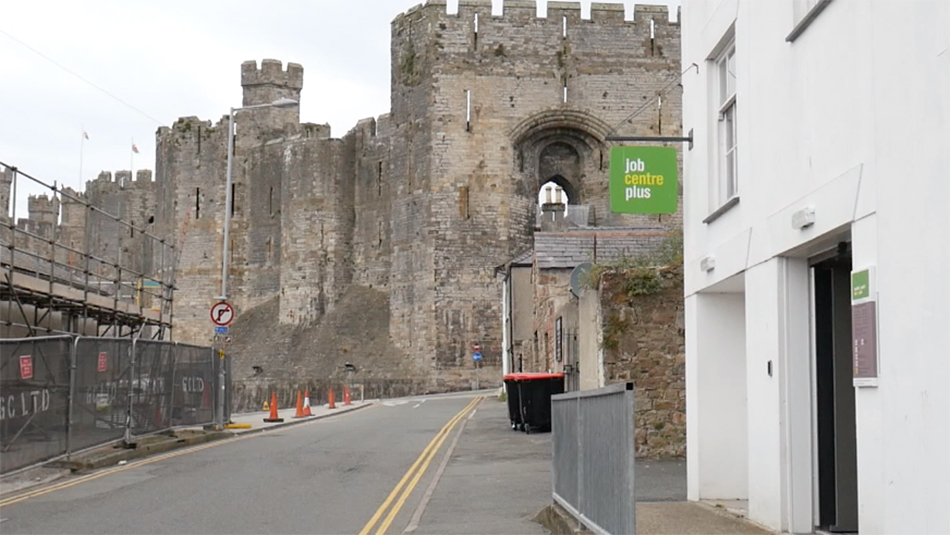
An Arfon Foodbank patron who declined to sit for an interview—we’ll call him Dylan—said he learned about Cold Weather Credit after it was too late. He’d spent time managing the switch to Universal Credit and Jobseeker’s Allowance after he and his partner had a child, just south of Bangor. A new baby in the home of welfare recipients can qualify them for Cold Weather Credit payments—but not before they officially register the information with a Jobcentre.
Dylan said he was frustrated to realise he could have gotten payments if he’d known to register changes in his household.
While waiting for her food allowance, a woman we’ll call Jane said the switch to Universal Credit brought her to the foodbank. While she used to budget her money on a bi-weekly basis, she now stretches to make ends meet for a full month. She has two children under the age of four and lives in the Caernarfon area.
Jane said she has never heard stories about Cold Weather Credit and must not be eligible for it. But, as a single parent on Universal Credit, she likely is.
The UK Government outlines the protocol for reporting a missed payment, in the event that someone experiences this. But if someone doesn’t know their eligibility, they won’t report logistical failures.
Mr Williams explains that people can’t be up in arms about something they haven’t been made aware of in the first place. “It’s not like it’s your everyday weekly benefits are being reduced by £25. It’s something that you might not know that you might get.”
He said that when he explains these issues to people, they understand them. Until then, he said, they don’t usually come across this information.
“Your average elderly or disabled person doesn’t really realise what’s going on,” said Mr Williams.
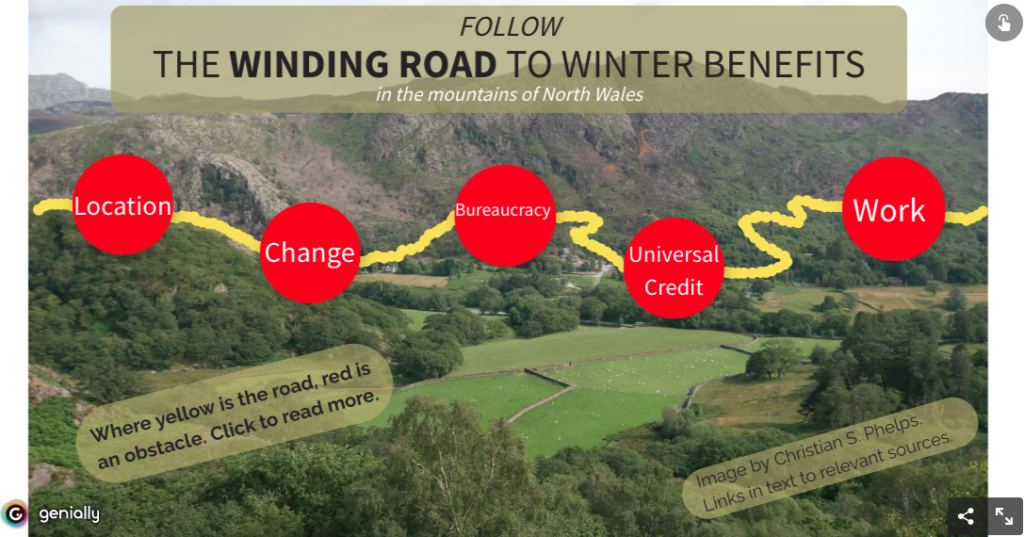
The path to getting cold weather payments is significantly windier than it would appear. While the government allows people to report missed payments, people who spend time proving their eligibility for various other benefits, raising children, visiting foodbanks, and taking on the multiple tasks required to keep their heads above water may not have time to check on the status of a payment that ought to come automatically.
And that’s not to mention the fundamental issues Mr Williams has found in the DWP’s weather measurement system.
Many people suggest that the idea of measuring cold weather is flawed at its core, given that the financial, physical, and mental impacts of wintry conditions don’t wait for a particular temperature.
“Because we’re on the sea, I think that exacerbates the wind chill factor,” Mr Williams said of his Arfon constituency’s unique clime. “Even though it might be around freezing, it feels like colder.”
Combine these windy conditions with the elevation of Snowdonia and poor insulation, and the measurement of cold weather seems more and more arbitrary. When people are eligible for assistance, Mr Williams said, it’s because they really need it.
“It’s not a huge amount of money, but it is the difference between having a cold house and a warm house. And that basically affects people’s health and eventually their mortality, as well.”
Once folks have gotten word and made it to a Jobcentre, the government’s logistical shortcomings and retroactive paperwork are likely to be the least of their concerns.
Rebecca is living out her old age in town, by the sea, where charities and people are ready to help her through tough times. One can only guess what another 10 days stranded in the mountains would mean for her now.
“People are cold,” Mr Williams said, “and they’re dying sooner.”
